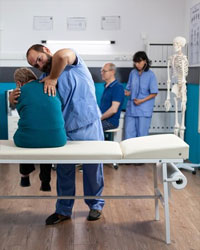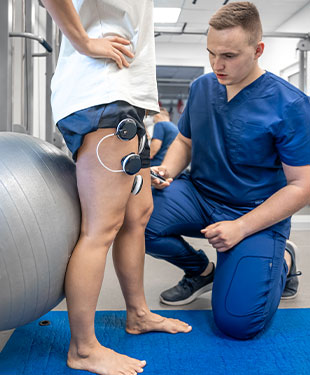Spinal Decompression Therapy in Edmonton
The spine is made up of a number of bones called vertebrae, and a disc sits between each vertebra. These discs can occasionally become compressed, which means they are squashed together and exert strain on the spinal nerves. Pain and other symptoms may result from this.
Forms of spinal decompression
The two primary forms of spinal decompression are:
Surgical decompression: A surgeon will undertake a treatment to remove any bone or tissue that is pressing on your nerves in order to decompress them surgically. Only when other therapies have failed is this kind of decompression used.
Non-surgical decompression: This is a non-invasive form of therapy that gradually stretches out your spine using a particular table or gadget. You either wear the equipment or lie on the table.
A chiropractor or physical therapist often does this type of decompression..
Who Needs Spinal Decompression Therapy?
Those with herniated discs, sciatica (pain that travels down the leg), or other diseases affecting the spine may benefit from spinal decompression. To determine whether spinal decompression is appropriate for you, it’s crucial to speak with a doctor or other healthcare professional.
Symptoms of Spinal Compression
Depending on where and how severely the compression is occurring, the symptoms of spinal compression can include:
Back and neck pain: The back, neck, or shoulders may experience pain, which can be either acute or dull.
Numbness or tingling: Numbness or tingling in the arms, legs, or other parts of the body may result from the compression of nerves in the spine.
Weakness: Nerve compression can result in weakness in the arms, legs, or other body parts.
Loss of bladder or bowel control: Severe spinal compression can damage the nerves that regulate bladder and bowel function, resulting in loss of control.
It’s crucial to get evaluated by a doctor or other healthcare professional if you have any of these symptoms. They can assist in identifying the underlying cause of your symptoms and suggest the right course of action, which may entail spinal decompression or other treatments.
Physical therapy can be beneficial for treating spinal compression since it can address the underlying reasons for the compression and help alleviate symptoms. Physiotherapy can assist with spinal compression in the following ways:
Exercise: Your physiotherapist can create a customized exercise plan to help you build stronger back muscles, which can support your spine and relieve compression. Exercise may also help to increase the range of motion and flexibility.
Manual treatment: To help reduce pain and stiffness and increase the mobility of the spine, your physiotherapist may employ manual therapy techniques like massage or joint mobilization.
Correcting your posture: Spinal compression can be a result of poor posture. To relieve pressure on your joints, your physiotherapist can assist you in improving your posture and body mechanics.
Education: Your physiotherapist may instruct you on safe lifting and carrying techniques as well as how to go about your regular activities without aggravating spinal compression.
Modalities: To help lessen pain and inflammation, your physiotherapist may employ modalities including heat, cold, or electrical stimulation.
The physical therapist may gently extend your spine while you are receiving physiotherapy using a specific table or other tools. Also, they could provide you instructions for particular exercises you can perform at home to assist your spine relax.
The physiotherapist can improve the way your spine feels and functions by performing spinal decompression. Being patient and adequately following the therapist’s directions is crucial because it could take some time for the therapy to be effective. The majority of people may, however, feel improved and resume their favorite activities with the aid of physiotherapy and other treatments.
Contact Creekwood Physiotherapy in Edmonton, Alberta now to learn more about our spinal decompression treatment services and how we can help you get with your chronic pain symptoms.















